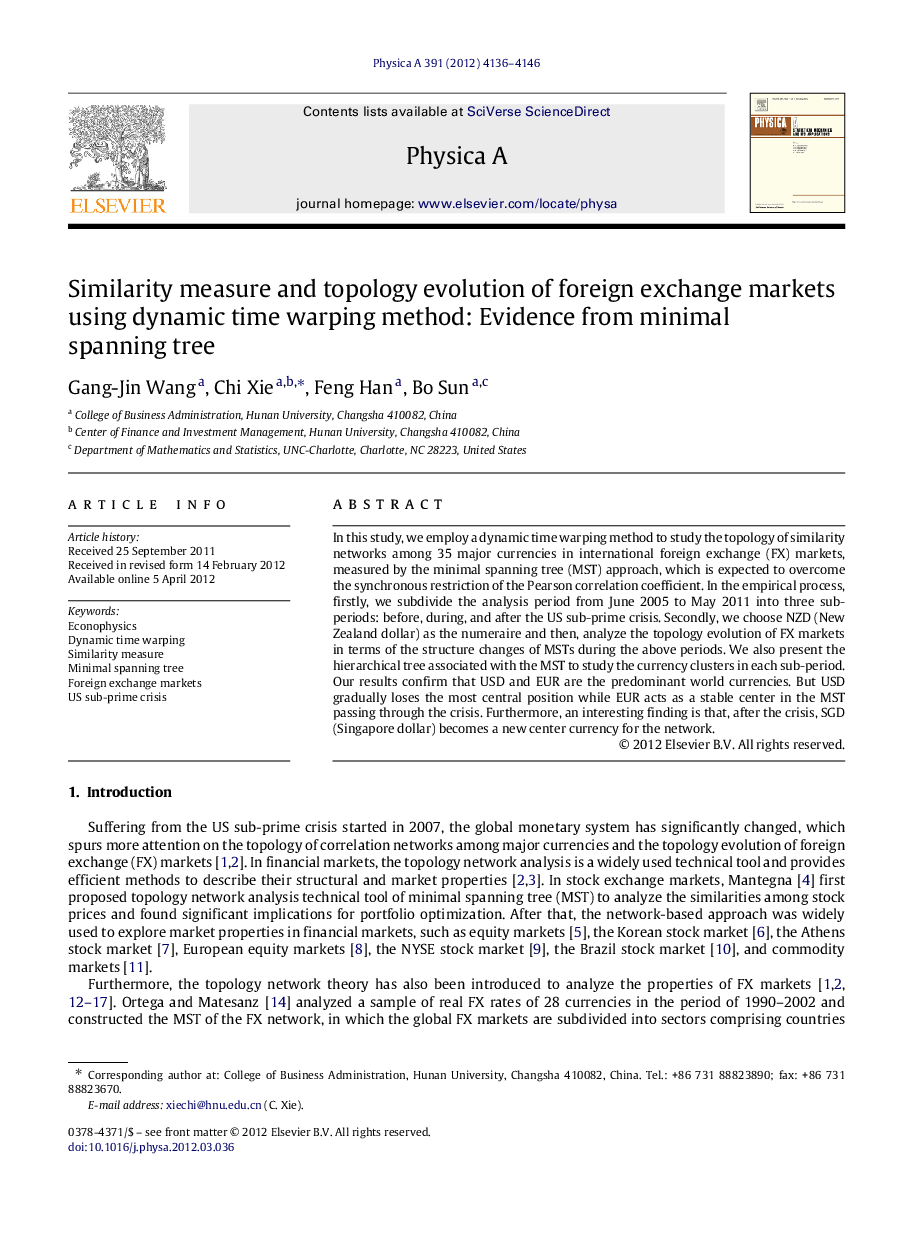| Article ID | Journal | Published Year | Pages | File Type |
|---|---|---|---|---|
| 976212 | Physica A: Statistical Mechanics and its Applications | 2012 | 11 Pages |
In this study, we employ a dynamic time warping method to study the topology of similarity networks among 35 major currencies in international foreign exchange (FX) markets, measured by the minimal spanning tree (MST) approach, which is expected to overcome the synchronous restriction of the Pearson correlation coefficient. In the empirical process, firstly, we subdivide the analysis period from June 2005 to May 2011 into three sub-periods: before, during, and after the US sub-prime crisis. Secondly, we choose NZD (New Zealand dollar) as the numeraire and then, analyze the topology evolution of FX markets in terms of the structure changes of MSTs during the above periods. We also present the hierarchical tree associated with the MST to study the currency clusters in each sub-period. Our results confirm that USD and EUR are the predominant world currencies. But USD gradually loses the most central position while EUR acts as a stable center in the MST passing through the crisis. Furthermore, an interesting finding is that, after the crisis, SGD (Singapore dollar) becomes a new center currency for the network.
► We employ the dynamic time warping method to measure similarity properties of FX rates. ► We analyze the topology evolution of the similarity network in FX markets by the MST approach. ► We subdivide the analysis period from June 2005 to May 2011 into three sub-periods: before, during, and after the US sub-prime crisis. ► USD gradually loses the central position while EUR acts as a stable center after the crisis. ► SGD becomes a new center currency for the network after the crisis.
